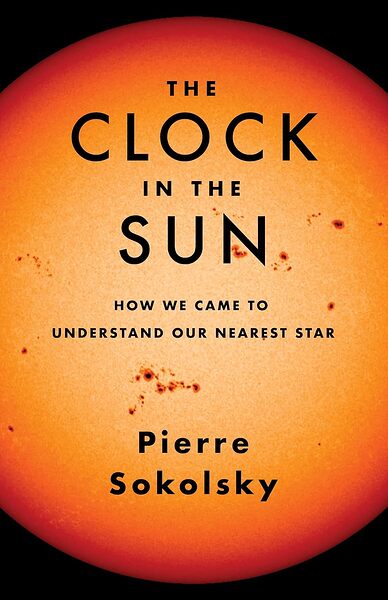Looking for a good read? Here is a recommendation. I have an unusual approach to reviewing books. I review books I feel merit a review. Each review is an opportunity to recommend a book. If I do not think a book is worth reading, I find another book to review. You do not have to agree with everything every author has written (I do not), but the fiction I review is entertaining (and often thought-provoking) and the non-fiction contain ideas worth reading.
Book Review
Spotted on the Sun
Reviewed by Mark Lardas
November 24, 2024
“The Clock in the Sun: How We Came to Understand Our Nearest Star,” by Pierre Sokolsky, Columbia University Press, October 2024, 336 pages, $32.00 (Hardcover), $16.99 (Ebook)
The Sun is our nearest star; the source of heat, light, and life for Earth. Humans have observed and even worshiped it since we evolved from apes. Since at least medieval times observers have seen imperfections on the Sun’s golden disk; black spots, now called sunspots.
“The Clock in the Sun: How We Came to Understand Our Nearest Star,” by Pierre Sokolsky is a history of solar astronomy and a scientific exploration of the Sun. Its focus is sunspots.
He opens by looking at the first recorded observations of sunspots, in fourteenth-century Russia and China. In Russia Orthodox monks observed the Sun seeking portents. In China court astronomers viewed it, with the same purpose – to determine the mandate of heaven. (Sololsky wryly notes court astronomers sometimes fudged public announcements to help favored emperors and harm disfavored one.) Both sets of observations were recorded, and the records preserved, providing independent corroboration they observed the same sunspots.
Then, in three chapters, he follows the history of solar astronomy from ancient times to the telescope’s invention. These chapters look at the nature of astronomy during each period of history. They explore the effect philosophy and religion exerted on science. Ironically Solosky reveals despite modern conceits, Greek philosophy especially that of Aristotle, proved more constraining to Western astronomy than the Christian church. Aristotelian concepts of heavenly perfection straightjacketed science until the Renaissance.
From the seventeenth century on, telescopes permitted detailed observation of the Sun. Solosky shows how this changed perceptions of the Sun. He also shows the growing fascination with sunspots, especially once it was realized there was a solar cycle, that sunspots had periodicity. Solar spectroscopy arrived in the nineteenth century, and he shows how that affected solar science.
Solosky also discusses attempts to correlate the solar cycle with the business cycle, and later, climate change. He closes with a look at modern solar astronomy and the impact orbital observatories have on this field.
While he shows similarities between medieval Chinese astronomers falsification for political purposes with business cycle research, he avoids this talking about anthropogenic climate change. He ignores the possibility climate scientists might be just as likely to skew results for reward. He may expect readers to draw their own conclusions.
Regardless, “The Clock in the Sun” offers fascinating reading. It brings readers up to date on the current solar model, while informing them of the rich history of solar astronomy.
Mark Lardas, an engineer, freelance writer, historian, and model-maker, lives in League City. His website is marklardas.com.
